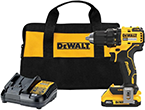What is a Drain-and-Trap Auger?
Written by Lee Wyatt (last updated September 23, 2016)
Have you ever wondered what a drain-and-trap auger is? Chances are you have heard the term at least once either by reading about it, or by talking to a plumber, or perhaps the clerk at the local home improvement store. It is a rather technical term, or name, for an item that is exceedingly common. Here is a little bit more information about these common, and wonderfully helpful tools.
- What is it? The term drain-and-trap auger is the correct and proper name for what most people call "the snake." Next to a plunger, this tool is perhaps the single most common tool available for removing clogs from rains. In fact, it is such a common tool that you can easily find it in the tool box of any professional plumber. It is also a tool that every homeowner should have as well.
- What are they used for? As was stated earlier, these tools are used to remove blockages found in a drain. While they can be used for most drains and pipes, this particular type of tool is designed for dealing with the drains and pipes associated with toilets, sinks, and tubs the most.
- How do they work? Drain-and-trap augers work by slowly turning as they extend. As they do this, they can often work their way through a blockage, and eventually push through. When they do push through, and they are then eventually retracted, this will leave an opening which will allow water and other fluids to pass through without much problem. Keep in mind that most models that you can get for home use only extend out about 25 feet. If there is a blockage further than that you will need to either contact a professional plumber, or rent a longer snake.
- Simple maintenance. As with most types of tools, and particularly plumbing tools, if you don't take proper care of the drain-and-trap auger, you can expect to see it deteriorate rather quickly. The simplest form of maintenance that you can perform on a snake is to thoroughly clean it when you are done. This can easily be done by taking the fully retracted snake outside, and then fully extending it. With the snake fully extended you can then rinse the snake off. Retract the snake, and then extend it out again to rinse off one more time. Repeat the process until the snake is completely clean.
Now that you know a little more about these very helpful tools, you can now start to look for the one that you will have in your own house. Keep in mind that you should only need to use one that is no more than 25 feet long, and can easily cost a minimum of $30. So, you may want to lok at this more like an investment, and should be treated as such.
Author Bio
Lee Wyatt
Contributor of numerous Tips.Net articles, Lee Wyatt is quickly becoming a regular "Jack of all trades." He is currently an independent contractor specializing in writing and editing. Contact him today for all of your writing and editing needs! Click here to contact. Learn more about Lee...
Removing Blood Stains from Carpeting
If there is one type of stain that can be difficult to remove, then it has to be blood from carpeting. Now, just because ...
Discover More
Understanding a Car Dealer's Invoice Price
While many people may not believe it, understanding a car dealer's invoice price can be a very helpful thing. In fact, by ...
Discover More
Preparing Your Lawn for Spring
Whenever the cold winter months begin to warm up again it is time to get ready to start working outside again. One of the ...
Discover More
More Home Improvement Tips
Finding a Good Plumber
As anyone who has ever had any plumbing work done can tell you a good plumber is worth their weight in gold. Here are ...
Discover More
Diagnosing Plumbing Pressure Problems
One of the biggest causes for a grumpy morning is the sudden loss of water pressure during a shower. If you find yourself ...
Discover More
Adjusting the Water Heater Temperature
One of the easiest, though slightly annoying, jobs that you can do around the home is adjusting the temperature of your ...
Discover More

Comments